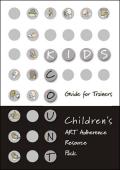What's New
Displaying results 4461 - 4470 of 4914

Resource | Tools,
This publication is intended to serve as a reference tool for countries with limited resources as they develop or revise national guidelines for the use of ART in adults and postpubertal adolescents. The material presented takes updated evidence into account, including new ART treatment options, and draws on the experience of established ART scaleup programmes. The simplified approach, with evidence-based standards, continues to be the basis of WHO recommendations for the initiation and monitoring of ART.
The guidelines are primarily intended for use by national and regional HIV programme managers, managers of nongovernmental organizations delivering HIV care services, and other policy-makers who are involved in the scaling up of comprehensive HIV care and ART in resource-limited countries. The comprehensive, up-to-date technical and clinical information on the use of ART, however, also makes these guidelines useful for clinicians in resource-limited settings. The recommendations contained in these guidelines are made on the basis of different levels of evidence from randomized clinical trials, high-quality scientific studies, observational cohort data and, where insufficient evidence is available, expert opinion.

Resource | Publications,
Approximately 123,000 Cambodians aged 15-49 are estimated to be living with HIV. An additional 12,000 (approximately 10% of the total) are children under the age of 15.2 The provision of antiretroviral treatment (ART) to people living with HIV/AIDS (PLHA) is a relatively new phenomenon in Cambodia. The National Strategic Response to HIV was, until 2004, primarily focused on HIV prevention thought VCCT and health education. But the advent of high level funding from the Global Fund for AIDS, TB and Malaria (GFATM) has drawn attention to the need to expand and support ART services.
The Cambodian National Strategic Response to HIV/AIDS has a clearly articulated Continuum of Care (CoC) to provide HIV treatment to PLHA. The CoC has a particularly strong community component within it, but children with HIV are not currently encompassed within this structure. The Clinton Foundation HIV/AIDS Initiative is committed to supporting the government of Cambodia to expand pediatric HIV/AIDS care in Cambodia as outlined in the Memorandum of Understanding between CHAI and the Ministry of Health. This concept paper is a first step to try and achieve that goal.
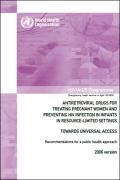
Resource | Guidelines,
These revised guidelines on ARV Drugs for Treating Pregnant Women and Preventing HIV Infection in Infants in Resource-Limited Settings are consistent with, and aim to support, the Call to Action Towards an HIV-free and AIDS-free Generation. The document is one of a trilogy of guidelines published at the same time which provide recommendations developed by WHO and its partners in support of the public health approach to antiretroviral therapy (ART) in resource constrained settings. It contains recommendations for the use of ARV drugs in pregnant women for their own health and for preventing HIV infection in infants and young children, and a summary of the scientific rationale for the recommendations. In particular, the publication aims to provide guidance to assist national ministries of health in the provision of ART for pregnant women with indications for treatment, and in the selection of ARV prophylaxis regimens to be included in programmes to prevent mother-to-child transmission (MTCT), taking into account the needs and constraints on health systems in various settings.

Resource | Presentations,
Background of HBC in Cambodia:
- In 1998, joint pilot project on HBC in Phnom Penh by NCHADS, Municipal Health Department, WHO, and 8 NGO
- End of 1998, evaluation of the pilot project by NCHADS and WHO
- In 1999, expansion of HBC to Battambang province
- In 2000, evaluation on HBC service by NCHADS, Alliance/KHANAAlliance/KHANA
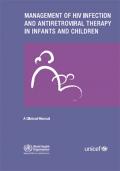
Resource | Tools,
Successful scaling-up of antiretroviral therapy (ART) requires rational use of antiretroviral (ARV) drugs.
These guidelines are based on the discussions held with health-care workers, researchers and programme managers from South-East Asia during a regional consultation organized by the World Health Organization Regional Office for South-East Asia (WHO SEARO) and the United Nations Children's Fund Regional Office for South Asia (UNICEF ROSA) in New Delhi during 2006. This consultation meeting reviewed the new data, experiences of scaling-up of pediatric ART in the Region and made recommendations for adaptation to the needs in the Region of the global WHO guidelines on Antiretroviral therapy of HIV infection in infants and children in resource-limited settings: towards universal access. To facilitate use at the country level the consultation recommended simplification of the global guidelines.
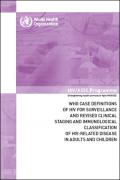
Resource | Publications,
With a view to facilitating the scaling up of access to antiretroviral therapy, and in line with a public health approach, this publication outlines recent revisions WHO has made to case definitions for surveillance of HIV and the clinical and the immunological classification for HIV-related disease. HIV case definitions are defined and harmonized with the clinical staging and immunological classifications to facilitate improved HIV-related surveillance, to better track the incidence, prevalence and treatment burden of HIV infection and to plan appropriate public health responses. The revised clinical staging and immunological classification of HIV are designed to assist in clinically managing HIV, especially where there is limited laboratory capacity. The final revisions outlined here are derived from a series of regional consultations with Member States in all WHO regions held throughout 2004 and 2005, comments from public consultation and the deliberations of a global consensus meeting held in April 2006.

Resource | Presentations,
This presentation aims to analyse the occurrence of stavudine (d4T) related toxicity in a large cohort of patients on highly active antiretroviral therapy (HAART).
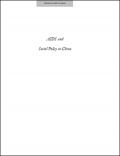
Resource | Publications,
China's AIDS epidemic began in the early 1980s as a localized epidemic among needle-sharing intravenous drug users along the border with Myanmar in China’s Yunnan Province. HIV infections are now found in all of China’s 31 provinces, municipalities, and autonomous regions, with new infections growing at an estimated rate of 30% annually since 1999 and 44% in 2003 (Wu, Rou, and Cui 2004). The epidemic has been unfolding for at least a decade and accelerating for the last few years (Kaufman and Jing 2002), and a narrowing window of opportunity exists to avert a much larger epidemic.

Resource | Presentations,
This is a presentation on results obtained from the implementation of the project, "A comprehensive intervention based on peer education for injecting drug users" in Lang Son. The objective of this project is to restrain HIV/AIDS epidemic within IDUs and from this group in to community in Lang Son.






